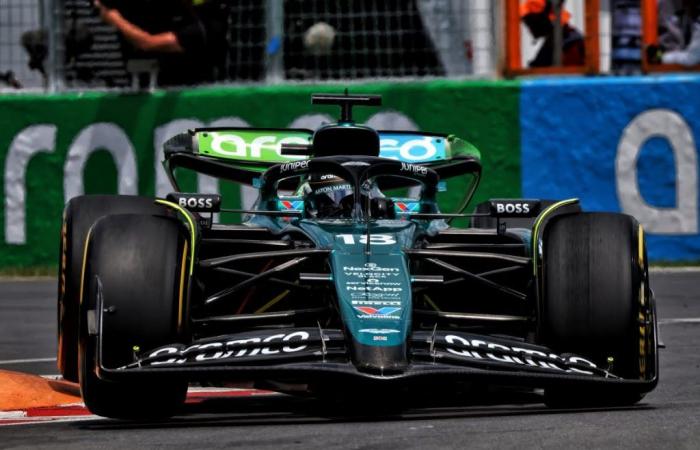Aston Martin is approaching tenth round from the F1 with confidence. Mike Krack, manager And team principal of the British team, he made it known that the English team has identified the weak points on which to intervene. By his own admission there will be two races in which they will perform certain test, necessary to fix things by validating the car. It remains to be seen what work program they will put in place, considering that some updates are expected to arrive. Upgrade to “cure” the AMR24. The objective aims to close part of the gap on the competition.
In this sense the Spanish race sounds a bit like the last call for Aston Martin. The team Of Silverstone has just returned from an overall good weekend, although for the most part the adverse and changing weather conditions, as well as the low temperatures, have offered benefits. Alonso And Stroll they conquered the Q3 on Canadian Saturday, with the home driver able to improve his position in the race compared to the start. Fundamental points for the all-green team that in just one round of F1 scored more points than the 4 weekend precedents. A result also favored by the absence of the two Ferrari.
The circuit of Montmelo it is much more complex and complete than the tracks where the last ones took place Grand Prizes. Furthermore, the climatic conditions could be unfavourable Aston Martin I respect the race of Canada. However, the team across the Channel is called upon to sweep away all the ifs and buts relating to the validity of the updates introduced during the current competitive campaign. The Catalan track, on a theoretical level, could definitively clarify the current level of the English car, putting it to the test AMR-24 in different types of curves.
Reasoning through logic, bringing and above all validating some developments implies that these allow a step forward, at least from simulations. At this point, a problem relating to data correlation seems evident, which we have already discussed in some past writings. Not being in possession of the data relating to the English car, it is difficult to go into more specifics. However, one of the step The most important thing to bring closer to the level of performance shown on the computer is certainly to stabilize the aerodynamic platform.
F1, Aston Martin worked to unlock the fund’s performance
Aston Martin wants to stabilize the AMR24 through stiffnesses specifically designed for the Spanish track. In fact, we know how complicated it is in the computing environment to make the aerodynamic platform stable, which in reality undergoes various changes in attitude due to the various depressions in the track. It is essential to make the single-seater stable, particularly in the support sections of turns 3, 4 and 12. In these areas, especially in the fast lap, limiting lateral micro-slips helps to keep the tires within the ideal usage window , saving a few grades of compound to finish the lap.
Aston Martin should opt for greater stiffness than its rivals, to optimize the work of updating the bottom. Consequently, the traction phase exiting slow corners such as 5, 10 or 12 could be more difficult. The aero-mechanical compromise would tend to favor the vertical thrust to nourish the performance of the aerodynamic map to the detriment of the grip mechanical in slow corners. The limit will be dictated by excessive overheating of the tyres. In fact, let’s remember that on several occasions the car proved to be incapable of handling the working range of tire tires.
As mentioned, skidding and excessive lateral sliding in general complicate the management of temperatures throughout the lap. Furthermore, through simulations, driver coaching and changes to the setup during free practice, the technicians favor a set-up moved towards the rear. By this we mean a front that is able to provide sufficient stability during insertion to bring the right speed. The drivers will rely on this even in the center of the corner. The load shift to the front after braking helps the rolling moment of the single-seater, favoring the rotation of the rear axle.
The same medium-high specification already seen in will be used at the rear Japanplaying with the incidence of beam wing to adapt the car to the circuit. Aston Martin can afford to take to the track with a level of downforce greater in principle and take advantage of the low forward resistance shown by the AMR24 during this season. Furthermore, the English team of F1 it has significantly improved the use of hybrid mapping, an aspect that could help riders particularly when exiting corners and guarantee additional power to mitigate traction difficulties.
Author and graphic designers: Leonardo Pasqual – @PasqualLeonardo
Images: Aston Martin – F1Tv






